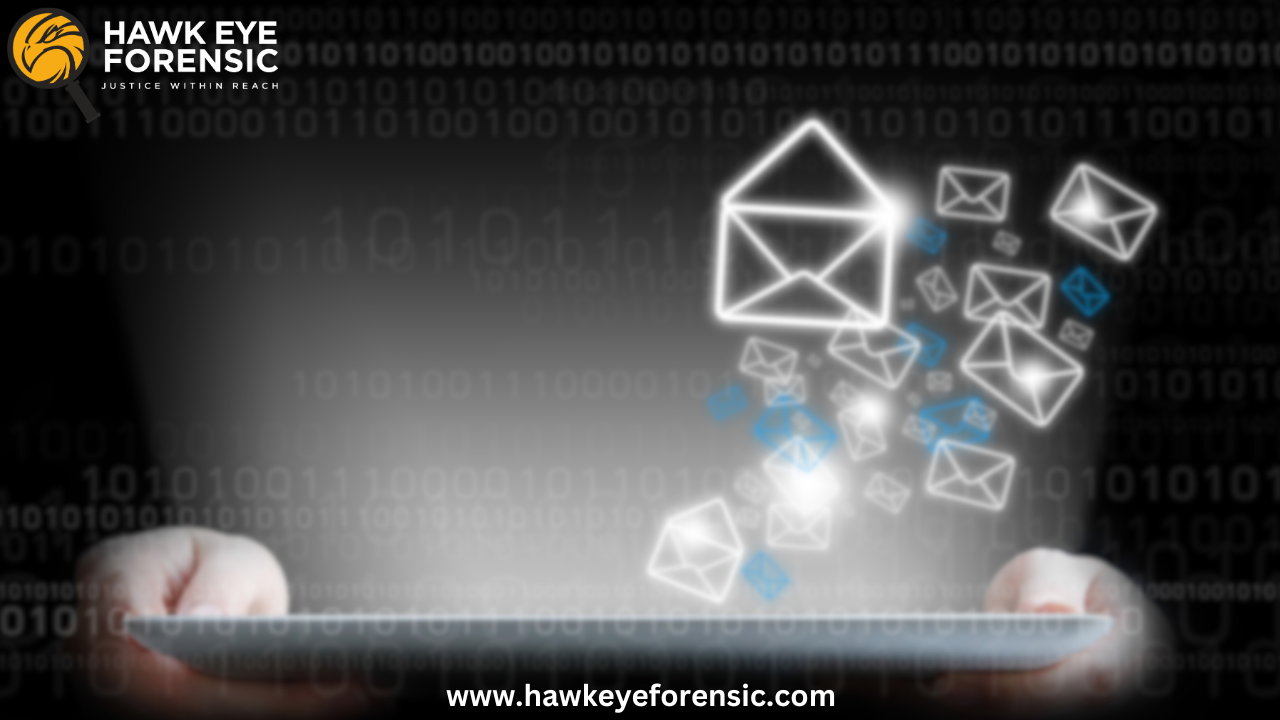In the digital age, email has become a common form of communication, both in personal and professional settings. However, beyond the content of the email itself, a plethora of hidden information lies within the email headers and metadata. Often-overlooked elements in digital forensic investigations can provide valuable insights. They aid in locating critical details about the sender, recipient, and the journey or path of the email.
Email Headers:
Email headers constitute the outermost section of an email message. They contain various fields that offer technical information about the email’s transmission and delivery. At first sight, email headers may seem complex. However, digital forensic experts can analyze and interpret the information they contain.
Some of the important details found in email headers include:
- To: The recipient’s email address is listed here.
- Subject: The subject line of the email.
- Date: The date and time the email was sent.
- Message-ID: A unique identifier assigned to the email message.
- Received: This field records the path the email took, including the mail servers it passed through, timestamps, and IP addresses.
These fields might seem straightforward, but they can be manipulated or spoofed. It’s crucial for forensic investigators to validate the information using various techniques.
Metadata:
Email messages contain metadata in addition to headers. This hidden data provides valuable contextual information about the email and its attachments.
This metadata can include:
- Email client information: Details about the email client (e.g., Outlook, Gmail, etc.) and operating system used to send the email.
- Attachment metadata: Metadata embedded within attachments, such as the author, creation date, and modification history of documents or images.
- Geolocation data: Some email clients and devices can embed geolocation data. This reveals the sender’s approximate location when the email was sent.
- Embedded objects: Emails may contain embedded objects like images or links. These can provide additional information about the sender’s intent or the email’s origin.
Analysis of Email Headers and Metadata:
Digital forensic investigators can extract valuable information by carefully analyzing email headers and metadata. This information can greatly aid in their investigations. Here are some examples of these kinds of cases:
- Identifying the true sender: While the “From” field can be easily spoofed, examining the email headers and metadata can help reveal the actual IP address and mail server used to send the email, potentially leading to the true sender’s identity.
- Tracing the email’s path: The “Received” headers provide a detailed record of the mail servers and IP addresses the email passed through during its journey. This information can be used to trace the email’s origin and potentially pinpoint the location of the sender.
- Detecting fraudulent activities: Certain patterns or inconsistencies in email headers and metadata can be indicative of phishing attempts, spam campaigns, or other fraudulent activities. Investigators can use this information to identify and mitigate potential threats.
- Verifying email authenticity: Email authentication protocols like SPF (Sender Policy Framework), DKIM (DomainKeys Identified Mail), and DMARC (Domain-based Message Authentication, Reporting, and Conformance) rely on information in the email headers to confirm that the sender’s domain is legitimate.
- Establishing timelines: The date and time information found in email headers and metadata can be used to establish timelines and sequences of events, which can be crucial in investigations involving cyber incidents, legal disputes, or other time-sensitive matters.
- Recovering deleted content: In some cases, metadata associated with attachments or embedded objects can help recover deleted or modified content, providing valuable evidence in investigations.
Tools and Techniques for Email Forensics:
Digital forensic investigators use several types of tools and techniques to efficiently examine email headers and information.
Here are some commonly used approaches:
- Email forensic tools: Specialized software like Aid4Mail, EmailTrackerPro, and X-Ways Forensics can parse and analyze email headers and metadata, providing detailed reports and visualizations.
- Network analysis tools: Tools like Wireshark and tcpdump can capture and analyze network traffic, including email transmissions, providing additional insights into the email’s journey.
- Header analysis techniques: Investigators can use regular expressions, scripting, and custom parsing techniques to extract and analyze specific fields or patterns within email headers.
- Metadata extraction: Forensic tools like EnCase, FTK, and Autopsy can extract and analyze metadata from email attachments and embedded objects, revealing valuable information about their origins and histories.
- Email server logs: Examining logs from email servers, such as Microsoft Exchange or SMTP logs, can provide additional details about email transmissions, authentication, and delivery information.
- Geolocation analysis: By leveraging IP geolocation databases and mapping tools, investigators can approximate the physical location of the sender based on the IP addresses found in email headers.
Recommended Procedures for Email Forensics:
- Preserve original evidence: Always work with copies of email files or server logs. This prevents altering or contaminating the original evidence.
- Maintain chain of custody: Document every step taken during the acquisition, analysis, and handling of email evidence. This establishes a clear chain of custody.
- Validate findings: Corroborate findings from email headers and metadata with other sources of evidence. These may include network logs, device forensics, or witness statements, strengthening the overall case.
- Stay up-to-date: Email technologies and protocols are continuously evolving. Investigators must stay informed about the latest developments and techniques in email forensics.
Conclusion:
Email headers and metadata may appear insignificant at first glance, but they hold invaluable information for digital forensic investigations. Investigators can uncover critical details about the sender, recipient, and email journey by understanding and analyzing these hidden elements. This can help identify potential fraudulent activities. Email forensics, with the right tools, techniques, and best practices, can provide crucial evidence for solving cases. It helps bring perpetrators to justice in the digital age
Written by:
Tagged as: Email protocols, Investigating Email Crimes, Email, Email client analysis, Metadata Analysis, IP address analysis, data recovery, Attachment metadata, Digital investigation, IP address, Chain of Custody, Embedded objects, Cybercrime investigation, Email server logs, Digital evidence, Email forensic techniques, Cyber Attacks, Geolocation data, Timeline Reconstruction, Scripting analysis, Metadata, Email authentication, Evidence preservation, Email security, Network analysis, Phishing detection, Forensic Tools, Email obfuscation, Email forensics, Spam campaign analysis, Forensic Reporting, Spoofing detection, Email headers, Header parsing, Digital Forensic Tools, Open-source intelligence (OSINT), Email tracing, Metadata extraction, Threat Intelligence, cyber rimes, Sender identification.







Post comments (0)